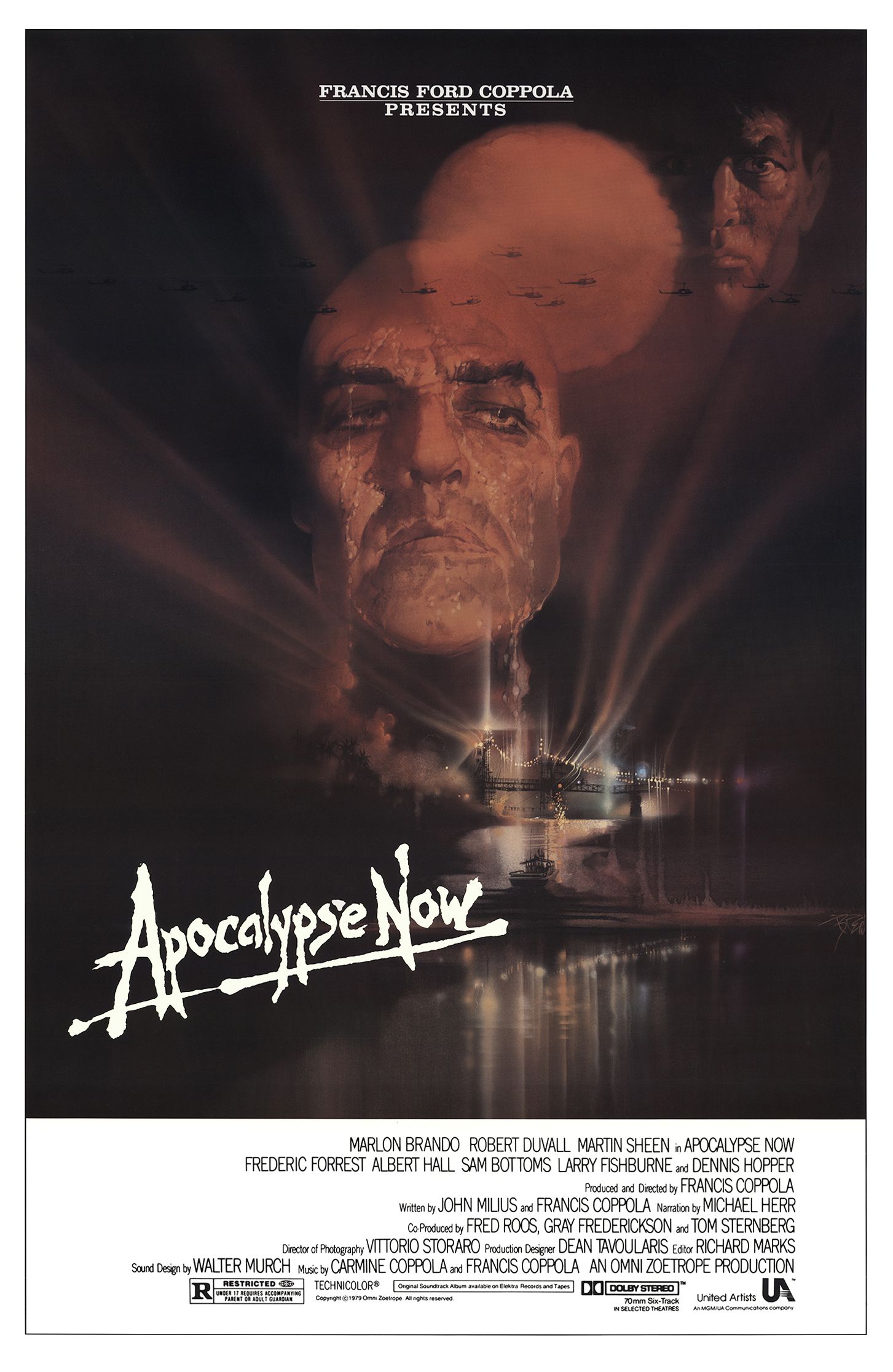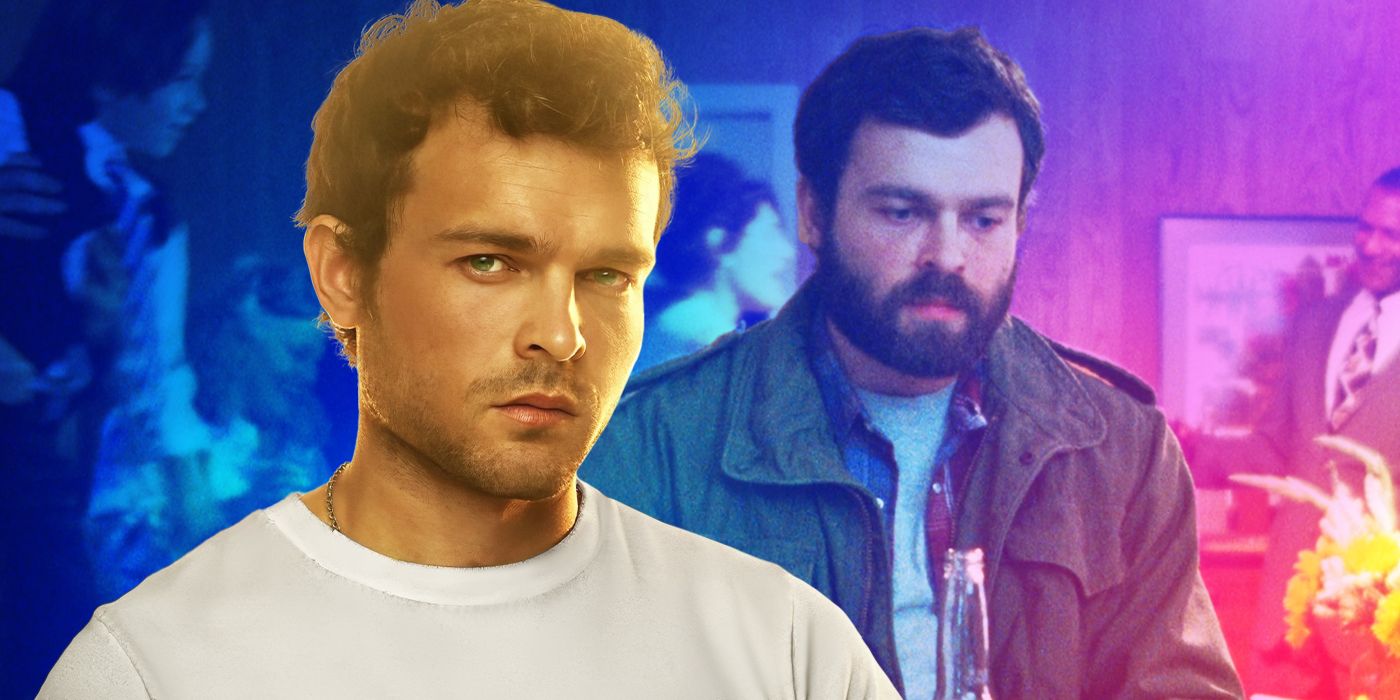The Big Picture
- Adapting Joseph Conrad's novella, Heart of Darkness, to the screen was a decades-long process filled with challenges and setbacks.
- The production of Apocalypse Now faced numerous obstacles, including replacing lead actors, dealing with a heart attack, and facing the practical demands of recreating a war-torn environment.
- The chaotic and troubled production of Apocalypse Now mirrored the psychological journey into darkness portrayed in the film, resulting in a groundbreaking epic that continues to be revered as a masterpiece.
In 1976, Francis Ford Coppola was riding high in the world of cinema. The previous four years saw the critical and commercial success of The Godfather and The Godfather Part II, both of which took home Oscars for Best Picture, and the latter winning Coppola additional awards for his direction and adapted screenplay. As one of the premier filmmakers working in Hollywood, it seemed as though the sky was the limit, and with his next project, Coppola would test his creative, financial, and psychological capacities in adapting Joseph Conrad's 1899 novella, Heart of Darkness. Penned by fellow scribe and director John Milius in the late '60s under the title Apocalypse Now, the film would shift the setting of Conrad's story from the jungles of Africa at the turn of the century to the deadly landscape of the Vietnam War.
When Coppola's cast and crew arrived in the Philippines in early 1976 to begin production, little did they know that they would be embarking on a creative journey that would go down as one of the most fraught and turbulent in cinematic history. Accompanying Coppola and shooting footage for what would eventually become the documentary Hearts of Darkness: A Filmmaker's Apocalypse, was his wife, Eleanor, and what she captured would shed light on the immense struggles associated with bringing Apocalypse Now to the screen. From typhoons and heart attacks to logistical overruns and unruly actors, Apocalypse Now would pose a series of challenges and risks to its creators that, in a pronounced example of life imitating art, reflected the surreal journey into the unknown undertaken by Conrad's protagonist in the film's source material. Perhaps most telling is how Francis Ford Coppola described the production of his film when, more than three years later at the 1979 Cannes Film Festival, he said of the experience, "We were in the jungle, there were too many of us, we had access to too much money, too much equipment, and little by little we went insane."

Apocalypse Now
A U.S. Army officer serving in Vietnam is tasked with assassinating a renegade Special Forces Colonel who sees himself as a god.
- Release Date
- August 15, 1979
- Director
- Francis Ford Coppola
- Cast
- Marlon Brando , Martin Sheen , Robert Duvall , Frederic Forrest , Sam Bottoms , Laurence Fishburne
- Runtime
- 153 minutes
- Main Genre
- Drama
- Writers
- Joseph Conrad , John Milius , Francis Ford Coppola , Michael Herr
- Studio
- UA
- Tagline
- This is the end...
Adapting 'Heart of Darkness' Was a Decades-Long Process
While Francis Ford Coppola would be the first filmmaker to succeed in bringing Joseph Conrad's novella to the screen, he was hardly the first to try. In 1939, a young and ambitious Orson Welles came to Hollywood to adapt Heart of Darkness to film. Intending to faithfully adhere to the source material and star in the film, Welles had the backing of RKO pictures and spent months working on the project, but several intervening factors ultimately derailed his production. As the sheer size of the germinating adaptation ultimately demanded a then-whopping $1 million budget and shooting in exotic locations, RKO got cold feet and abandoned the ambitious film. As a result, the aspiring auteur shifted his focus to a project that became one of the all-time greats: Citizen Kane.
Three decades later, as Hollywood saw the transition from the Golden Age of Cinema to a new generation of filmmaking rebels fresh out of college, Heart of Darkness resurfaced with the screenwriting efforts of John Milius. Thanks in part to a USC professor, who informed the young filmmaker and his fellow students that no one had ever been able to "lick Heart of Darkness," which Milius considered akin to "waving a red flag" in front of the proverbial bull, the screenwriter was enticed by the notion of taking a shot at an adaptation. He enlisted the help of fellow film school graduates and friends, George Lucas and Francis Ford Coppola, who took the reins as director and producer, respectively. The film was planned to be shot on 16mm and approached with a documentary-like aesthetic in the vein of The Battle of Algiers.
The adaptation soon found itself on the creative back burner, however, with Coppola focusing on his Godfather films and The Conversation, while Lucas moved on to write and direct American Graffiti and Star Wars. In 1975, after establishing himself among Hollywood elites and possessing enough power and influence to make nearly any film he desired, Coppola revisited Apocalypse Now. Under the banner of his independent production company, American Zoetrope, and with an approved budget of $12 million, the epic war film would begin production in the Philippines in early 1976 with a cast including Marlon Brando, Harvey Keitel, and Robert Duvall.
'Apocalypse Now' Endured a Series of Setbacks
The production of some films proves so rife with complications and hardships that the story behind the story reaches heights of mythic proportions, and Apocalypse Now is no exception. Throughout its unparalleled and lengthy shoot, which finally wrapped after a whopping 238 days, it seemed as though almost everything that could've gone wrong went wrong. The first of these obstacles reared its ugly head when, after reviewing footage shot over several days, Coppola was faced with the uncommon and presumably always unpleasant predicament of having to replace one of his lead actors. Harvey Keitel's performance as Captain Willard was deemed insufficient for the director's vision of the character, and he was promptly replaced with Martin Sheen. Having already shot a significant amount of material with Keitel, the actor's replacement required Coppola to re-shoot for days.

How Francis Ford Coppola Inspired Alden Ehrenreich's Short 'Shadow Brother Sunday'
Ehrenreich breaks down his directorial debut from the writing process to which iconic directors inspired the short, when we can watch it, and more.Several months later, as Apocalypse Now clocked in at over a year in production, lead actor Martin Sheen, who is in practically every scene and is the driving force behind the film's narrative, suffered a heart attack. After crawling his way to the side of a road and being picked up by a bus, Sheen received medical care and a priest administered the last rites in a language that was foreign to the ailing actor's ears. As word of Sheen's health crisis spread like wildfire, Coppola was forced to either postpone the shooting of crucial scenes or use a body double for Sheen, scrounging what little usable footage he could. Yet again, the film's shooting schedule was extended and the budget skyrocketed.
In addition to the nuts and bolts of performance and its impact on the film's overall narrative, Apocalypse Now faced consistent headaches and hurdles related to the practical demands of bringing such a large-scale film to the screen. With accessibility to digital technology years away, Coppola had no choice but to employ practical methods to achieve the operatic action sequences required to tell his story. This included constructing expansive sets in the unforgiving jungle, acquiring and using real helicopters and other military equipment supplied by the Filipino government, and coordinating extras. While filming the film's famed helicopter attack sequence, it wasn't uncommon for the Filipino pilots to suddenly abandon their extensively choreographed (not to mention costly) shots and answer a call to battle Communist insurgents in other parts of the country. Furthermore, just two months into production, Typhoon Olga made landfall in the Philippines and caused widespread devastation, destroying a number of the film's sets and forcing the production to shut down for months, once again burdening the already behind-schedule and over-budget shoot.
How Did Life Imitate Art While Filming 'Apocalypse Now'?
Despite treacherous weather, potentially fatal medical emergencies, and the inherent complications of recreating a war-torn environment in a foreign nation, one might assume that Coppola would at least be able to maintain some semblance of control over his actors. However, like every other aspect of Apocalypse Now's troubled production, this was also an element the filmmaker found himself at the mercy of regularly. While portraying a photojournalist who's spent too much time in the jungle, Dennis Hopper was, according to The Guardian, notoriously under the influence of substances throughout his time on set and frequently didn't know his lines. But for all of Hopper's shenanigans, it was Marlon Brando who put Coppola between a rock and a hard place. The legendary actor, arguably at the top of his game, wielded an unusual level of power and demands when he signed on to play Colonel Kurtz. Having been guaranteed a $3 million salary for three weeks of work, $1 million of which was paid upfront, Brando arrived on set in the Philippines significantly overweight and without having read Heart of Darkness.
Coppola suddenly found himself in a position of having to rework the film's ending, regularly improvising with Brando in terms of narrative, theme, and the mechanics of shooting. Along with cinematographer Vittorio Storaro, Coppola elected to frame Brando in shadowy compositions, proving effective at concealing his weight gain while also projecting a metaphorical sense of soulful darkness and inner turmoil onto his character. Perhaps a blessing in disguise, Coppola's having to improvise lent the character of Kurtz, and the film's underlying meditation on the battle between good and evil, a level of depth and thematic impact that may not have surfaced were it not for the unexpected adverse circumstances.
By the final leg of the film's shoot, as the relentless momentum of its seemingly endless schedule barreled ahead, one can't help but draw a comparison between the psychological journey into darkness undertaken by its characters and that of members of the production. Particularly for Francis Ford Coppola, the mental and physical pressure that mounted as he labored against increasingly difficult circumstances drove him to the edge of his psychological limits. As Captain Willard and his men traveled upriver into an increasingly bizarre, dangerous, and morally depraved reality, so too did the filmmaker and his co-workers. It's safe to assume that Coppola has never, before or since, endured a production as troubled and chaotic as that of Apocalypse Now, but in one of cinema's quintessential examples of life imitating art, he and his team fearlessly stepped out into the unknown and were plunged deep into the darkest and most surreal corners of their psyches.
Having shot over 1,000,000 feet of film and completed principal photography, Apocalypse Now spent nearly two years in post-production and the film's budget capped off at $30 million. The result was a groundbreaking epic that enjoyed critical and commercial success, being awarded the Palme d'Or at the Cannes Film Festival and receiving nominations for eight Academy Awards, including Best Picture, Best Director, and Best Adapted Screenplay. More than forty years later, Apocalypse Now continues to be revered as a masterpiece and one of Coppola's crowning achievements, placing a flag in uncharted territory regarding the perilous lengths a group of artists will go to realize a collective vision of morality and madness.
Apocalypse Now is available to rent on Amazon Prime Video in the U.S.

